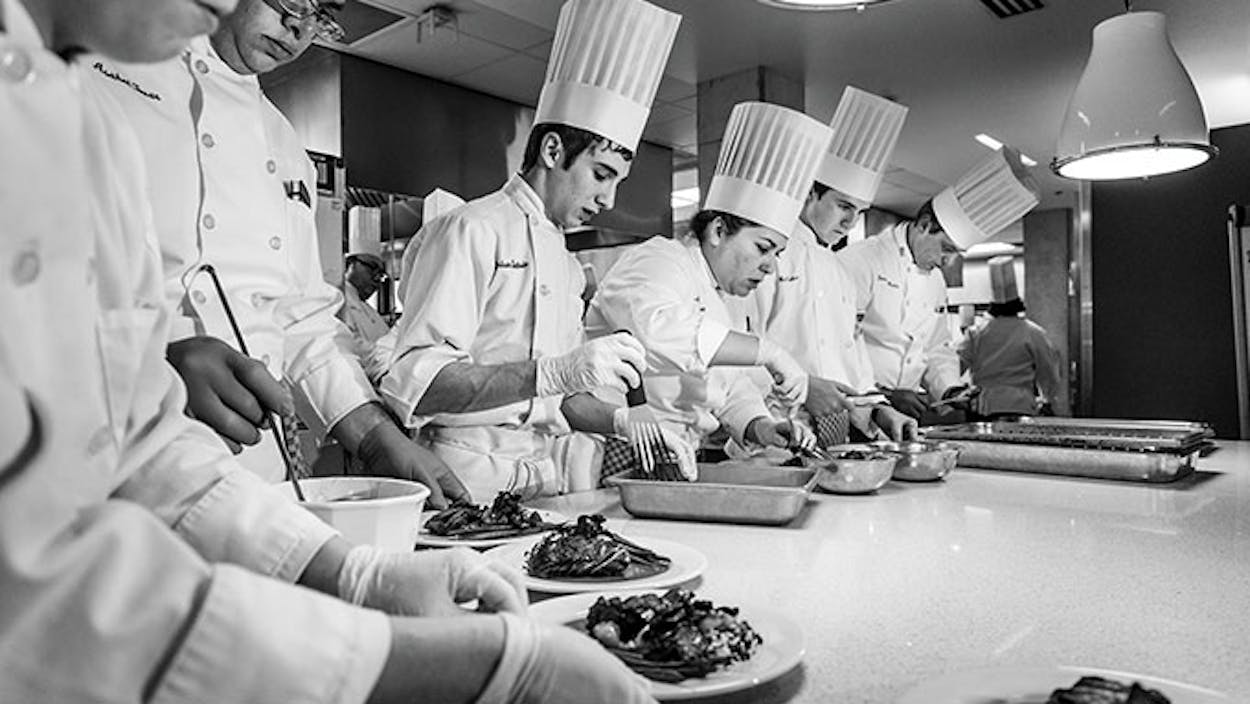The creation of the San Antonio campus of the Culinary Institute of America has all the makings of an “only in Texas” story: a local man makes a fortune off salsa, then gives back to his community by financing a world-class cooking school in partnership with the country’s most prestigious culinary college, which is based in—all together now—New York City!?! (Well, Hyde Park, but close enough.)
Probably no one but Christopher “Kit” Goldsbury, impresario of Pace Picante Sauce, could have imagined that the remains of the nineteenth-century Pearl Brewery complex, which his private equity firm purchased in 2001, would one day house a new, 30,000-square-foot laboratory, where art and science collide in a pleasingly aromatic fashion. Yards of stainless steel and scarred butcher block line the airy skills kitchen, where white-coated pupils roll sushi for a seminar on Northeastern Asian cuisine. Upstairs, aspiring pastry chefs employ brushes and paints in a color theory class, while outside, bearded guys in overalls deliver armfuls of white oak to the outdoor kitchen. Students here get the same instruction they would at Hyde Park, but you won’t find an in-ground barbacoa pit on that campus. And therein lies Goldsbury’s vision: his hometown was a uniquely situated portal from which to launch a comprehensive study of Latin American cuisine, an initiative that would also work to preserve its traditional cooking techniques and champion its treasured (and sometimes endangered) regional dishes. Equally important was his desire to raise the profile of Latino cooks, who are too often doing everything in the kitchen but running it. In 2003 Goldsbury found an ally in Tim Ryan, the president of the CIA, and after five years, innumerable conversations, and the infusion of $35 million of that salsa money, the renowned school, whose other famous campus is in the no-brainer location of Napa County, California, planted its flag in San Antonio. (Two years later, a fourth CIA campus opened in Singapore.) State-of-the-art facilities were built, and $20 million of Goldsbury’s donation was earmarked for scholarships (almost all of the prospective students are Texans and at least half of those are Hispanic).
As of early this year, fifty aspiring chefs had thrown their toques in the air (and one philanthropist had earned a well-deserved honorary doctorate). Speaking to the graduates at the January 17 commencement ceremony, Bryan Caswell (CIA class of ’99), the much-lauded chef-owner of Houston’s Reef, likened them to passengers at a train station, ready to choose a destination. Whether they travel far or stick close to home, break the rules (Grant Achatz, ’94) or build an empire (Charlie Palmer, ’79), these culinary ambassadors of America’s seventh-largest city will have a profound influence on what and how we eat. At the very least, they may make yuca and choclo and hoja santa as familiar as the humble salsa that started it all.








